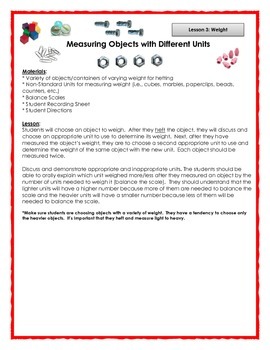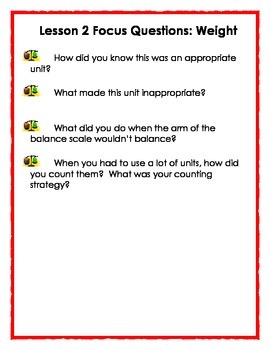Measuring Weight in the Measurement Lab
Stacey Benedetti
70 Followers
Grade Levels
1st - 5th
Subjects
Resource Type
Standards
CCSS3.MD.A.2
CCSS4.MD.A.1
CCSS4.MD.A.2
CCSS5.MD.A.1
Formats Included
- PDF
Stacey Benedetti
70 Followers
Description
The Measurement Lab is designed to clean up misconceptions in the area of weight. The lessons in Measurement Lab are created for students 1st-5th grade. Students have a difficult time remembering how to accurately measure when they don’t understand the basic concepts of measurement. Often times teachers will skip the most important conceptual lessons because they are focused on teaching the CCSS. Without checking to see if the students understand the most basic concepts, the students who struggle understanding these concepts will likely have a difficult time retaining what little they have learned and may not understand enough to do what is asked of them.
Total Pages
Answer Key
N/A
Teaching Duration
Other
Report this resource to TPT
Reported resources will be reviewed by our team. Report this resource to let us know if this resource violates TPT’s content guidelines.
Standards
to see state-specific standards (only available in the US).
CCSS3.MD.A.2
Measure and estimate liquid volumes and masses of objects using standard units of grams (g), kilograms (kg), and liters (l). Add, subtract, multiply, or divide to solve one-step word problems involving masses or volumes that are given in the same units, e.g., by using drawings (such as a beaker with a measurement scale) to represent the problem.
CCSS4.MD.A.1
Know relative sizes of measurement units within one system of units including km, m, cm; kg, g; lb, oz.; l, ml; hr, min, sec. Within a single system of measurement, express measurements in a larger unit in terms of a smaller unit. Record measurement equivalents in a two-column table. For example, know that 1 ft is 12 times as long as 1 in. Express the length of a 4 ft snake as 48 in. Generate a conversion table for feet and inches listing the number pairs (1, 12), (2, 24), (3, 36),...
CCSS4.MD.A.2
Use the four operations to solve word problems involving distances, intervals of time, liquid volumes, masses of objects, and money, including problems involving simple fractions or decimals, and problems that require expressing measurements given in a larger unit in terms of a smaller unit. Represent measurement quantities using diagrams such as number line diagrams that feature a measurement scale.
CCSS5.MD.A.1
Convert among different-sized standard measurement units within a given measurement system (e.g., convert 5 cm to 0.05 m), and use these conversions in solving multi-step, real world problems.





